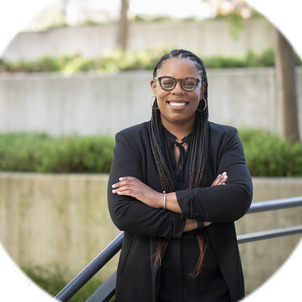I didn’t set out to have a career in human resources. I used to work in hospitality — hotels, restaurants — and I helped out with aspects of HR like training and recruiting. I had experience, but it wasn’t formal. At one point, the HR manager at my job went on maternity leave and they asked me to take on some of her responsibilities. When she decided not to come back from that leave, they offered me the job. That’s how I ended up in HR.
It’s easy to look at HR as merely the department responsible for recruitment. But I can tell you, the job is so much more than that. Most people go into HR because they want to help others. No one goes into HR wanting to be seen as a roadblock. We try to find a way to see the full picture, work on compromises, and create positive outcomes for everybody. On a daily basis my work involves supporting our department’s needs. I work specifically with the computer science, mechanical engineering, and aero/astro departments, the Institute for Computational and Mathematical Engineering (ICME), and SUNCAT — whom we call our clients. I help them with recruiting, organizational design, compensation, and performance management. We’ve also been focusing on initiatives to promote diversity, equity, and inclusion. Every day is different.
During this past year, my team experienced a lot of staff transitions. All of these changes were happening during a very busy season when we were dealing with performance evaluations, launching our new performance platform, going through salary planning, and piloting return to onsite work. A lot was happening all at once. I was recently recognized with a staff Leadership Award for the work I did during this time to help keep things running smoothly.
Sometimes people forget that in HR, we go through challenging times and burnout too. We help others by providing important resources for mental health and for burnout, but we also feel the effects of it. One mode of stress relief for me is international travel. With the pandemic, I obviously couldn’t do that for a while. But, when things started to open up, I started to take more domestic excursions; a quick weekend trip to San Diego, trips to Seattle, a ski trip in Park City. Getting out and being in different scenery really helps me reset.
Over the years, I’ve learned how to create some balance for myself and know that while I am energized by people, it’s OK for me to take time for myself to recharge. We have new members on our HR team and getting to know each of them and how we can work together has been energizing. At the heart of our work is a goal to make Stanford Engineering a great place to have a career and I’m excited to be a part of that.
Related spotlights

Lara Weed

Sebastian Fernández

